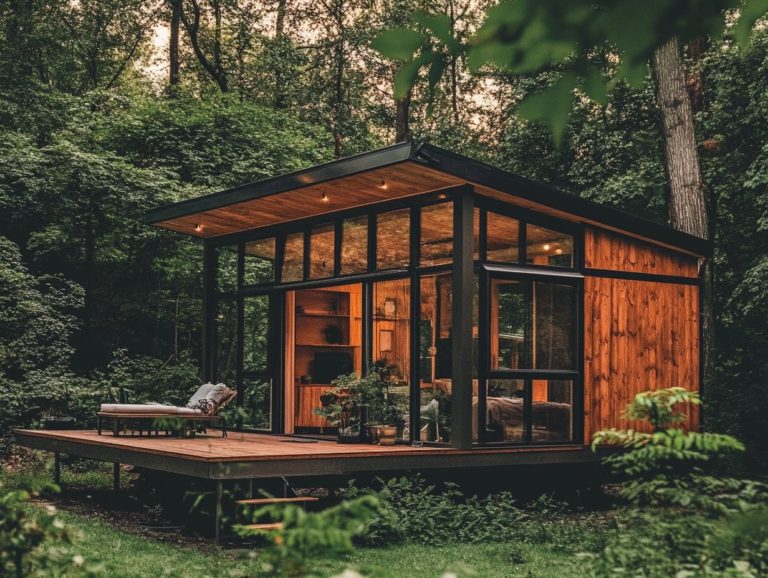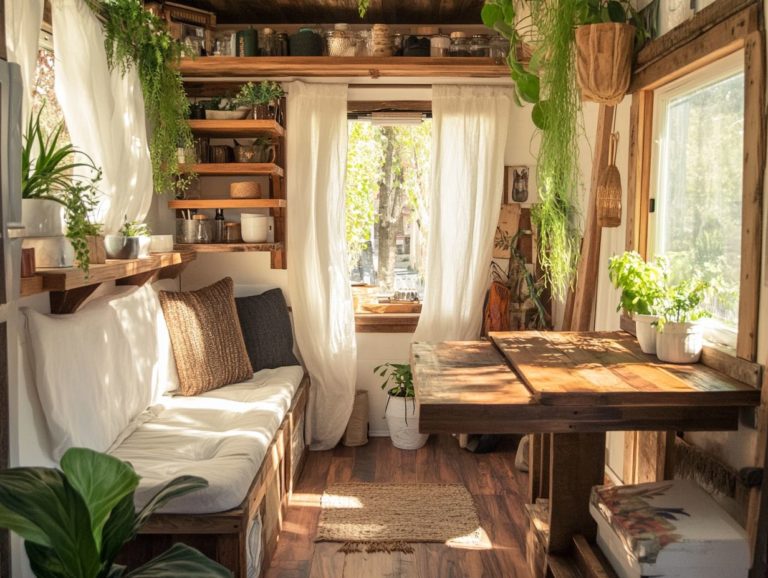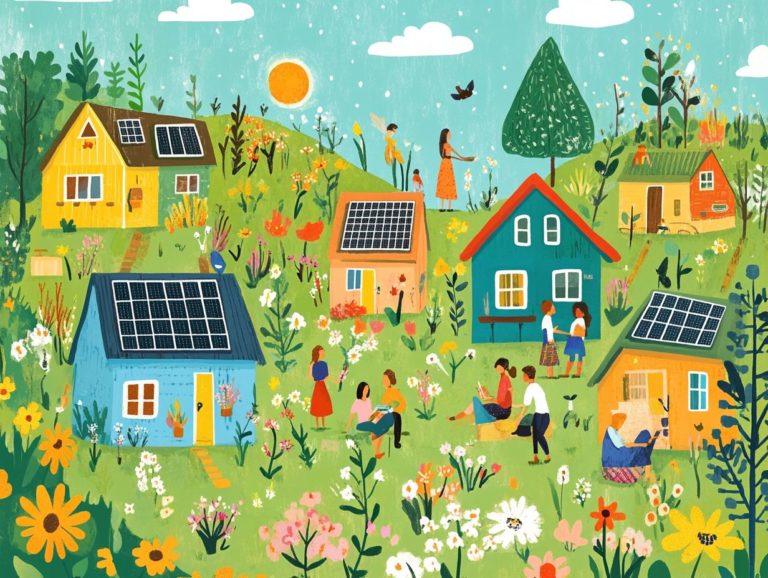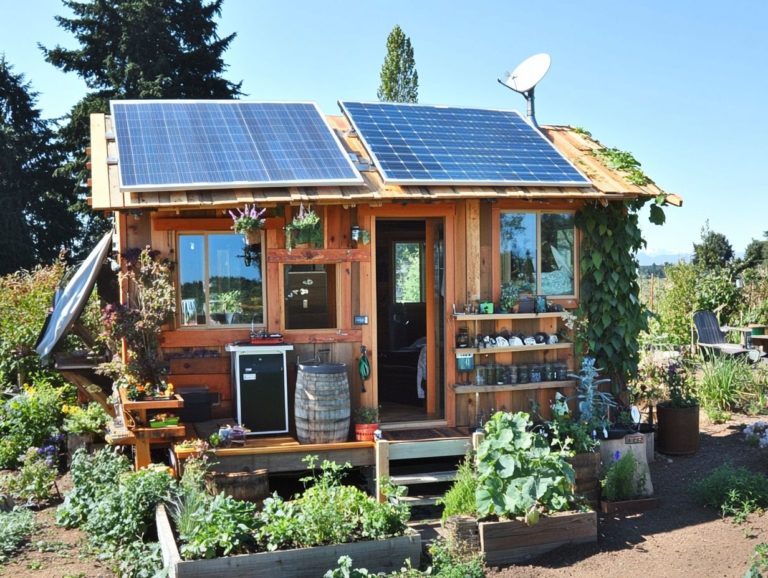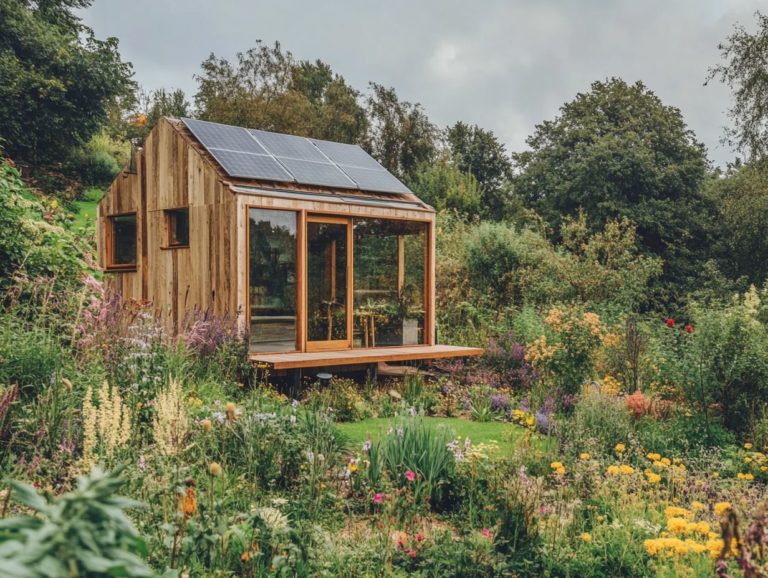The Impact of Sustainable Materials on Tiny House Value
The Tiny House Movement represents more than just a minimalist lifestyle; it embodies a philosophy focused on sustainability and mindful living.
As one delves deeper into this movement, the selection of materials for tiny homes becomes essential, influencing both their environmental footprint and overall value.
This exploration invites consideration of the relationship between sustainable materials and tiny houses, shedding light on their benefits, the factors that affect value, and practical tips for integrating eco-friendly options into one s build.
Discover how making these thoughtful choices can lead to exciting financial savings and pave the way for a greener future in tiny living!
Contents [hide]
- Key Takeaways:
- The Tiny House Movement and Sustainable Materials
- Benefits of Using Sustainable Materials in Tiny Houses
- Factors That Affect Tiny House Value
- Sustainable Materials That Increase Tiny House Value
- How to Incorporate Sustainable Materials in Your Tiny House
- Frequently Asked Questions
- 1. What are sustainable materials and how do they impact the value of tiny houses in the context of greenhouse gas emissions?
- 2. How do sustainable materials affect the energy efficiency of a tiny house, particularly in relation to renewable energy?
- 3. Can using sustainable materials in the construction of a tiny house save me money in the long run, especially considering housing costs?
- 4. Do tiny houses made with sustainable materials hold their value better than traditional homes, particularly within the housing market?
- 5. How do sustainable materials affect the overall design and appearance of a tiny house, especially in terms of tiny house designs?
- 6. Can using sustainable materials in my tiny house help reduce my carbon footprint, particularly regarding sustainable practices?
Key Takeaways:
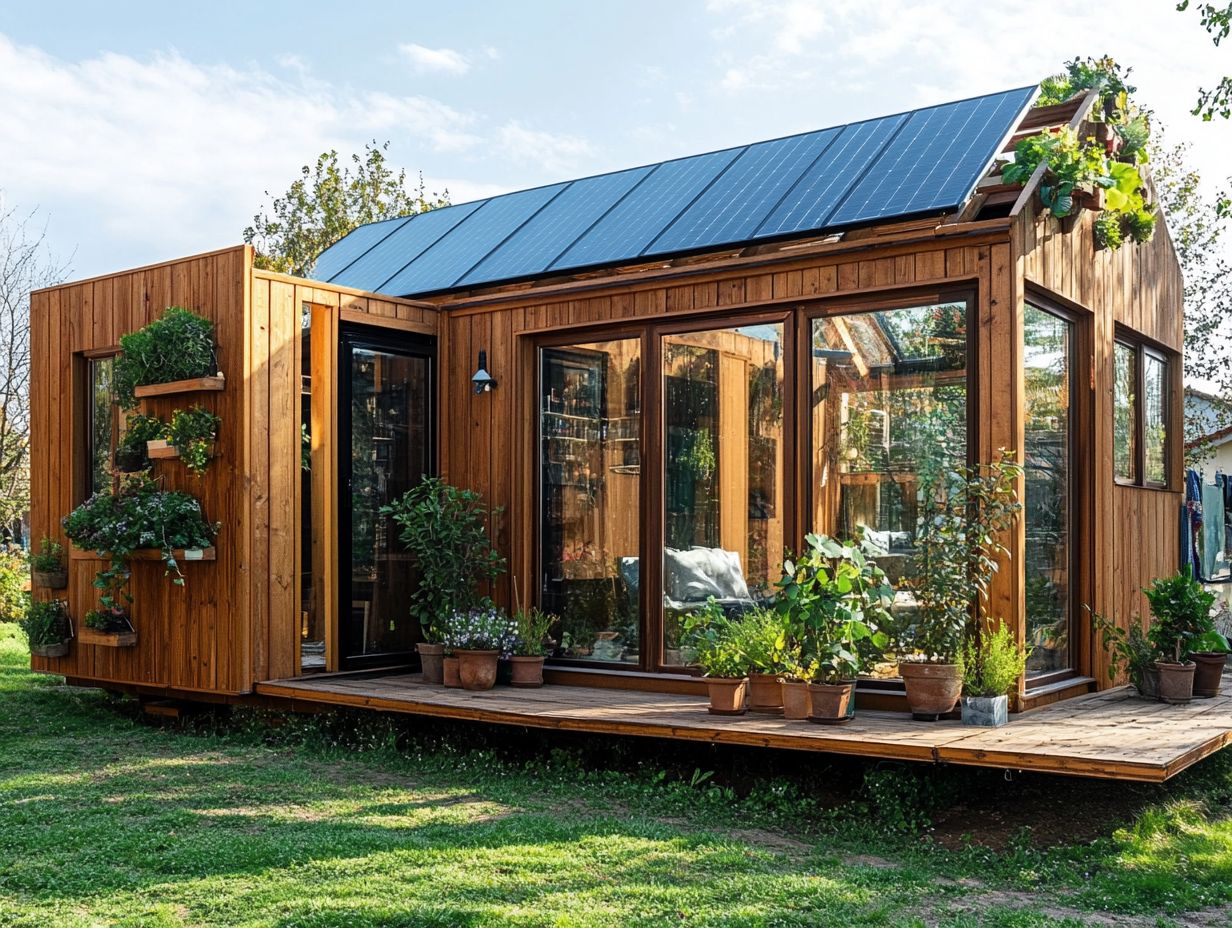
- Sustainable materials in tiny houses have a positive environmental impact, contributing to financial freedom and eco-friendly living.
- Factors such as location, market demand, and materials used can affect the value of a tiny house.
- Incorporating sustainable materials not only increases the value of a tiny house but also contributes to the overall success of the tiny house movement.
The Tiny House Movement and Sustainable Materials
The Tiny House Movement marks a profound transformation in one s perception of home ownership and living spaces, fueled by an increasing need for affordable housing and a deep commitment to sustainable living. This movement champions innovative housing solutions and underscores the significance of utilizing sustainable materials to mitigate the environmental impact of construction.
As the population expands, the demand for eco-friendly homes intensifies, and tiny homes present an appealing option for anyone looking to minimize their ecological footprint.
Understanding the Relationship
Understanding the relationship between the Tiny House Movement and sustainable materials invites exploration of how these elements contribute to a reduced ecological footprint and enhanced energy efficiency.
By using eco-friendly resources like reclaimed wood for structural components and bamboo for flooring, one can create tiny homes that boast striking aesthetics and remarkable durability. These materials play a crucial role in energy conservation, as they often originate from renewable sources and generate less waste compared to traditional options. Choosing high-performance insulation made from recycled denim or cellulose can greatly lower heating and cooling costs, as highlighted in the role of sustainability in tiny house construction.
This thoughtful approach embodies the principles of minimalism and sustainability central to the tiny house movement. It fosters a deeper connection between one and their environment, promoting a lifestyle that emphasizes conscientious resource management and social connection.
Benefits of Using Sustainable Materials in Tiny Houses
Using sustainable materials in tiny houses presents a wealth of advantages. It significantly reduces environmental impact and translates into substantial financial savings for homeowners in search of eco-friendly alternatives. This approach promotes financial freedom and a more sustainable lifestyle.
Environmental Impact
The environmental impact of using sustainable materials in tiny homes is remarkable, as these choices lower the carbon footprint and greenhouse gas emissions typically linked to traditional housing, aligning with global sustainability initiatives.
By incorporating reclaimed wood, not only does one harness the beauty and durability of exquisite materials, but one also plays a vital role in preserving forests and reducing landfill waste. Opting for recycled metals further bolsters this initiative, benefiting from their strength and longevity while sidestepping the energy-intensive processes needed to extract and process new materials, promoting a culture of sustainability.
The tiny house movement promotes a lifestyle centered on simplicity and eco-friendliness, aligning seamlessly with global sustainability goals by advocating for reduced resource consumption and smaller living spaces. As more individuals choose tiny living, the ripple effect on ecological conservation becomes increasingly clear, fostering community connection.
Financial Savings
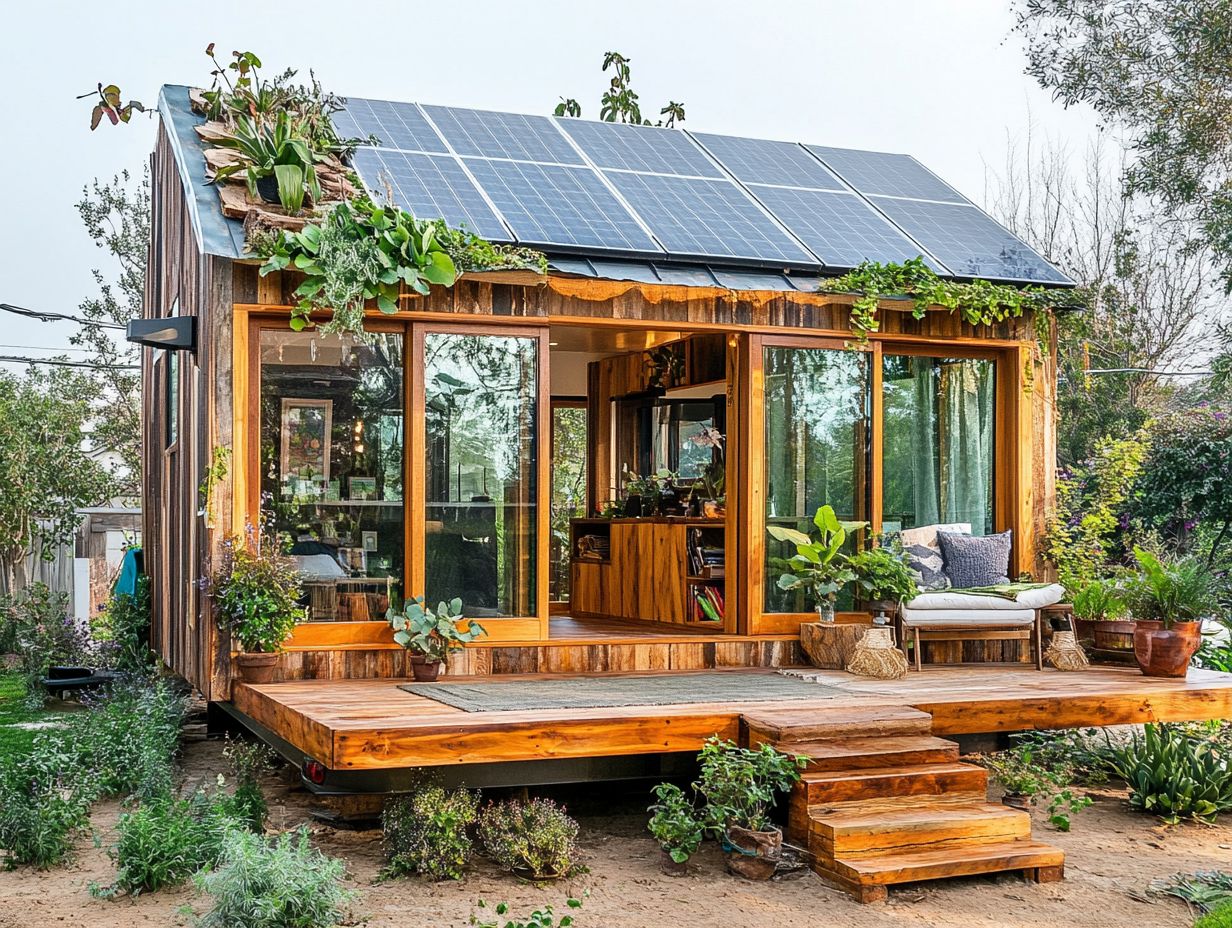
Financial savings stand out as one of the key benefits of using sustainable materials in tiny homes. This often paves the way for long-term cost-effective solutions that promote financial freedom for you as a homeowner.
By investing in eco-friendly resources like bamboo flooring and recycled insulation, you may enjoy significant reductions in both maintenance and utility costs. For example, a couple in Oregon switched to solar panels and energy-efficient appliances. They experienced monthly savings of up to 50% on their energy bills!
These smart choices boost energy conservation and require less upkeep. This frees up your funds for other essential aspects of your life while enabling a more sustainable lifestyle.
This financial relief highlights how embracing sustainable practices can enhance not just environmental well-being, but also the health of your personal finances.
Factors That Affect Tiny House Value
Several factors significantly influence the value of tiny houses. Location, market demand, materials used, and overall construction quality all play vital roles in understanding the housing market.
Understanding these elements empowers you to make informed decisions as you explore the tiny house landscape, especially in the context of a rapidly changing housing market.
Location and Market Demand
The value of tiny homes is significantly influenced by their location and market demand. Urban living often commands higher prices while fostering unique community connections.
Take Denver, Colorado, for instance. The growing population and a strong appetite for sustainable living drive up both demand and prices for these compact dwellings. In contrast, Olympia, Washington, offers a slower-paced lifestyle and a more affordable housing market. This creates enticing opportunities for buyers on a budget.
Each area s climate also plays a crucial role. The dry air in Denver might limit maintenance issues, while Olympia’s wetter conditions could require additional considerations for durability. By understanding these dynamics, you ll be equipped to confidently seize the best tiny house opportunities!
Materials and Construction
The choice of materials and the quality of construction are crucial in determining the value of your tiny house. Prioritizing sustainable options that comply with modern building codes enhances energy efficiency.
By incorporating eco-friendly materials like reclaimed wood, bamboo, and recycled metal, you can enhance the aesthetic appeal of your tiny home while ensuring its durability against the elements. This commitment to sustainability resonates with environmentally conscious buyers, potentially boosting your market value. Consider using recycled materials in tiny house designs for an even greater impact.
Integrating innovative construction techniques such as energy-efficient systems and smart technologies significantly enhances functionality and overall living experience in your tiny home. These advancements make daily life more convenient and promise substantial long-term savings on utilities.
It s clear that a thoughtful approach to materials and construction can lead to remarkable benefits.
Sustainable Materials That Increase Tiny House Value
Certain sustainable materials do more than bolster the environmental advantages of tiny homes; they also elevate their overall value. This makes them particularly attractive to potential buyers, especially in markets focused on eco-friendly designs.
Explore tiny house options today and consider sustainable materials to enhance your living experience!
Examples and Benefits
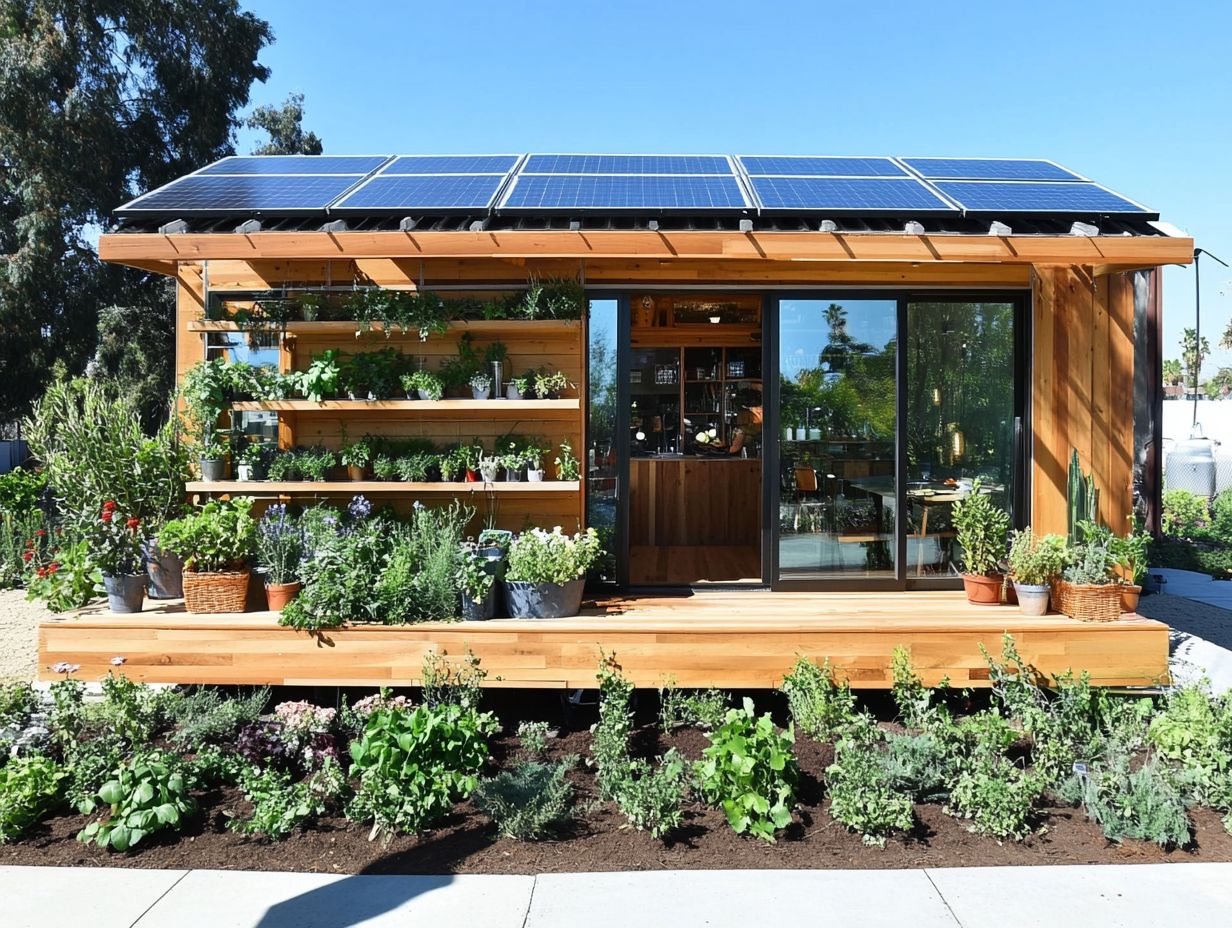
Sustainable materials like reclaimed wood, bamboo, and recycled steel bring unique benefits. They boost energy efficiency and save you money!
Choose reclaimed wood for character and warmth! It infuses your living space with a charm that mass-produced materials can t match.
Bamboo is another fantastic option. Celebrated for its rapid growth, it serves as an eco-friendly alternative to traditional timber, allowing you to embrace sustainability without sacrificing style.
Recycled steel stands out for its durability and low maintenance requirements, ensuring your tiny home remains sturdy in various environments.
By opting for these materials, you significantly reduce your ecological footprint. These choices mean fewer replacements and repairs, bolstering the environmental and economic viability of your tiny home.
How to Incorporate Sustainable Materials in Your Tiny House
Incorporating sustainable materials requires a thoughtful approach that harmonizes appearance, functionality, and eco-friendliness. This careful balance transforms the process into a rewarding DIY endeavor!
Tips and Tricks for Implementation
Implementing sustainable materials can be straightforward and rewarding! Here are some eco-friendly tips and tricks to enhance your living space:
- Tap into local resources for reclaimed wood, low-VOC paints, and efficient insulation options.
- Engage with local sustainability groups to source materials responsibly and support community initiatives.
- Explore workshops focused on eco-friendly construction for hands-on experience and innovative techniques.
These efforts also contribute to the broader movement toward sustainable living, addressing the housing crisis and promoting affordable housing.
Consider the environmental impact of our choices, especially in the context of population growth!
Frequently Asked Questions
Here are some common questions about sustainable materials and their benefits:
1. What are sustainable materials and how do they impact the value of tiny houses in the context of greenhouse gas emissions?
Sustainable materials are eco-friendly materials that minimally impact the environment. They are often renewable, reusable, and recyclable. When used in tiny house construction, they can increase home value due to their energy efficiency and reduced carbon footprint!
2. How do sustainable materials affect the energy efficiency of a tiny house, particularly in relation to renewable energy?
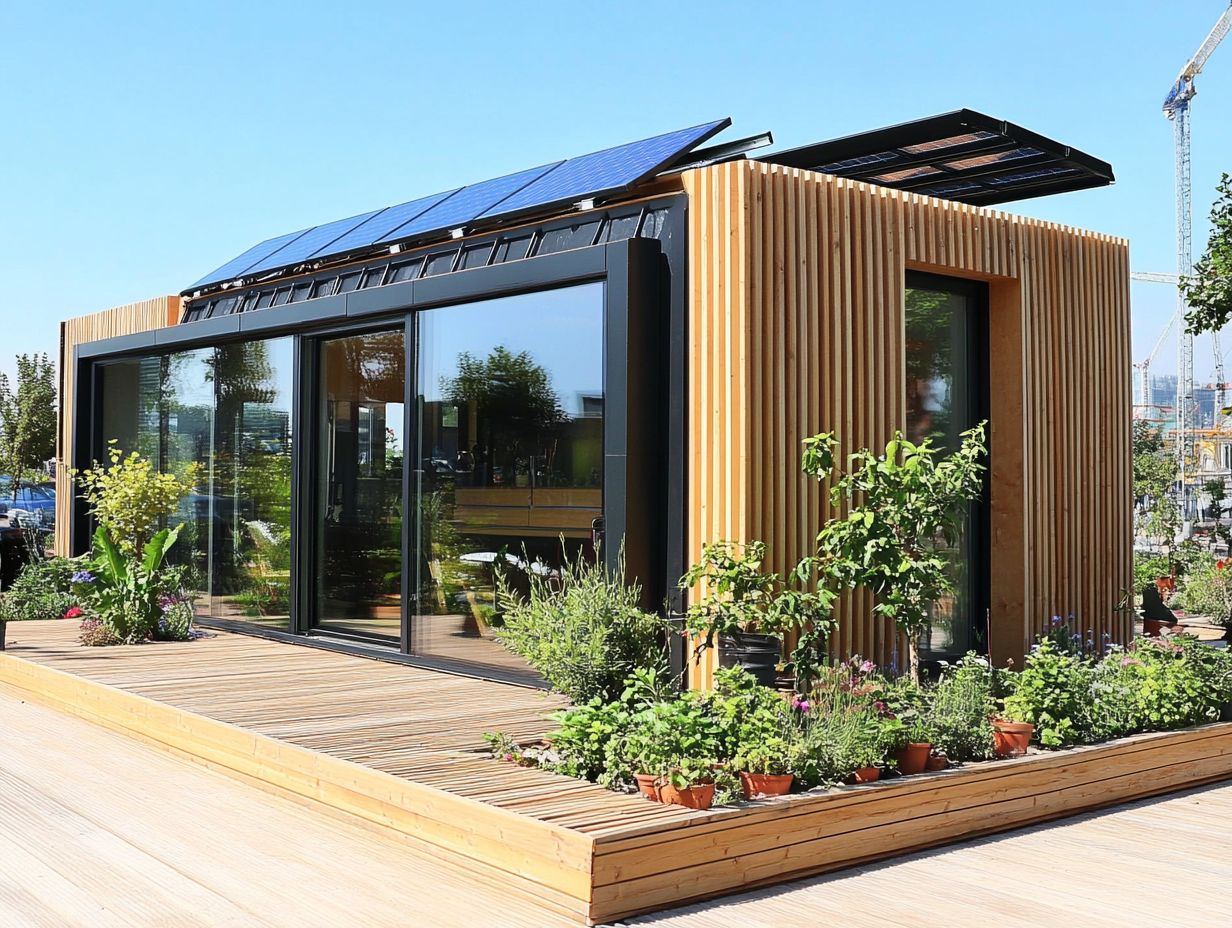
Sustainable materials, such as solar panels, energy-efficient windows, and insulation made from recycled materials, can greatly improve energy efficiency. This leads to lower utility bills and increases the overall value of your home!
Start your tiny house journey today and make a positive impact on the environment!
3. Can using sustainable materials in the construction of a tiny house save me money in the long run, especially considering housing costs?
Using sustainable materials can save you money in the long run. While the upfront costs may be higher, they will significantly lower your energy and maintenance expenses.
4. Do tiny houses made with sustainable materials hold their value better than traditional homes, particularly within the housing market?
Tiny houses made from sustainable materials typically hold their value better than traditional homes. As more people seek eco-friendly options, demand for these tiny houses increases, raising their resale value.
5. How do sustainable materials affect the overall design and appearance of a tiny house, especially in terms of tiny house designs?
Sustainable materials can enhance the modern look of a tiny house. Options like reclaimed wood and recycled steel offer stylish designs that attract potential buyers.
6. Can using sustainable materials in my tiny house help reduce my carbon footprint, particularly regarding sustainable practices?
Sustainable materials have a minimal environmental impact. Using them can lower your carbon footprint and foster a sustainable future, enhancing your home’s value and community connections.

